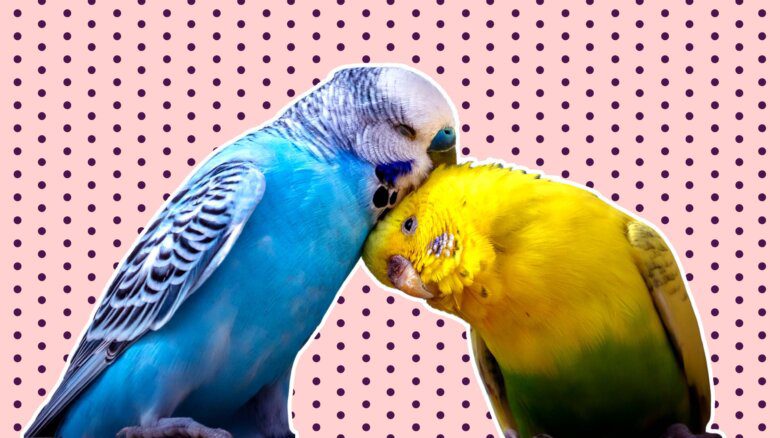“I knew it was bad and dirty but I didn’t know what it meant,” says Shelley Taylor about being diagnosed with herpes at age 18. “And because I’d never heard of anyone with an STI, there was no one to talk to at all. I had a boyfriend at the time, who probably gave me herpes, and I broke up with him because I preferred to do that than to say it out loud. I had this huge secret I had to protect at any cost.”
These days, as the owner and manager of Venus Envy, a feminist sex toy store and bookshop that regularly puts on workshops on sex and relationships, Taylor is open about her herpes diagnosis. But even now, she sees evidence of social shame around sexually transmitted infections. “When I give workshops I sometimes say I have herpes, and people still look away, look down, look embarrassed. There [are] still a lot of questions about herpes, and a lot of misinformation.”
Taylor doesn’t take their discomfort personally. “I don’t think they’re ashamed on my behalf; I think it’s something going on with them. I’d say 30 to 50 per cent of the people at my workshops have some connection to herpes, whether their own or a lover’s, oral or genital.”
Taylor’s initial experience of STI shame is hardly unique. Sexual shame takes many forms, and as queers, we can have extra baggage.
The not-so-subtle message conveyed by much of mainstream television, movies, religion, rightwing politicians, and even our own families goes something like this: “Look at the sick, deviant gay people, the disgusting lesbians, the confused and fickle bisexuals, the perverts in leather, the freaks who think surgery will make them a different sex. You certainly don’t want to be like them.”
But what exactly is shame? How does it work? And how does it play out in queer lives?
Charlie Glickman’s take on the topic is an interesting one. Glickman is the education program manager at Good Vibrations, San Francisco’s groundbreaking sex toy store. Having worked as a sex educator in various forms for nearly two decades, Glickman wrote his PhD thesis on sexual shame.
“Sex-positive communities talk about shame as if it is a bad thing. And I actually believe that it’s not. It’s just a thing. Like anger. Anger can motivate people to change their lives and the world, or to harm people. It’s all in how you respond to it, what your relationship to your anger is. Turns out it’s actually the same thing with shame.”
Glickman explains that shame is one mechanism used to teach children what social mores and rules are, and that the discomfort of shame can be a strong motivation for positive change — for example, if one were to feel ashamed of being violent with others and seek ways to stop.
He informs me that “the words emotion and motivate come from the same root, which is ‘to move.’ Logic does not get people to change their behaviour, emotions do. Logic just helps you figure out what to do.”
He goes on to say that the question really becomes whether the rules we’re trying to enforce are reasonable and authentic.
“The rule of ‘don’t be queer’ makes no sense. Research shows that sexual diversity exists in every mammal species, and lots of bird species. And it exists among humans. Why shouldn’t it? The idea that every human needs to have procreative sex every time they have sex is ridiculous. These ideologies say that men are supposed to be like this and women like that. And while some of these things may be true statistically speaking, when we look on the individual level, it’s more important to see what works for each particular person.”
In other words, shame is a way of enforcing who and what we’re supposed to be by giving us a set of internal rules, the transgression of which we associate with intense negative emotions. Yes, society’s power brokers set up the system, but the power of shame lies in the fact that it lives on inside us, that we effectively become our own enforcers.
“The nutshell version of how shame works is that the discomfort of it motivates you to change your behaviour,” Glickman says. According to him, for that process of change to be effective, the next steps are apology, atonement and reconciliation, meaning a commitment to change the behaviour that’s being questioned.
“It’s a very complex dynamic. There are many steps to the process, and that’s why we get bogged down in it. People don’t know how to apologize, or acknowledge they did anything wrong.”
And, as Glickman mentioned, all this rests on the rules being reasonable in the first place.
In a 2005 brief presented to the Legislative House of Commons Committee in support of Bill C-38 on same-sex marriage, the Canadian Psychological Association stated, “Homosexuality in and of itself is not a psychological problem or disorder and has not been considered so by the professional mental health community for 30 years.” Their position is in keeping with their two earlier policy statements, the first (issued in 1984) stating that it is “unethical to use or misuse current knowledge to imply there is scientific evidence to justify discrimination based on sexual preference,” and the second (issued in 1996) “opposing prejudice, bias and discrimination on the basis of sexual orientation in all areas.”
Whether you believe in nature or nurture or some of both, one feature of queer desire is its sheer tenacity. So, while the shame mechanism may be able to motivate positive change in some instances, queerness throws a wrench into that mechanism because it’s not, in fact, a problem that needs fixing. If anything, the individuals and groups who promote intolerance and who use their influence to shame queers into self-hatred are the ones who need some fixing. But negative social messages nonetheless lay a heavy burden on many queers.
“I think the big thing we’re looking at is internalized homophobia, where the oppression from dominant ideals about what sexuality and gender should look like has a profound effect on self-concept,” says Peggy Kleinplatz, an associate professor of medicine and a clinical professor of psychology at the University of Ottawa, as well as a queer-friendly clinical sex therapist.
In Kleinplatz’s experience, that results in such things as fear of discovery and fear of rejection by family, colleagues and friends. In other words, that inner experience of shame is outwardly manifested in a number of ways. Glickman explains the typical process.
“One of the things that happens when people are deep in the undigested shame cycle, they often go to either repression, rebellion or both. They internalize and repress their sexuality and wall it up, and will sometimes try to repress other people’s sexuality as well.”
That repression can take many forms — from anti-kink discussions in the blogosphere to politicians who use their power to limit the rights of sexual minorities.
“I once wrote a piece about how a Republican staffer said that homosexuality is sexual drive turned inward and is necessarily narcissistic,” says Glickman by way of example.
But, contrary to what people might assume, Glickman thinks rebellion is no healthier a response to shame than repression.
“I see a lot of this in the sex-positive community, where anything’s okay as long as it feels good to people. I think both of those [approaches] are equally problematic. Because what we end up doing is a binge-purge cycle, either as individuals or as a culture,” he says.
“I do understand that, in a world that forces people to have rigid boundaries that are inauthentic to them and way too small, you may blast them away and not want to have any boundaries whatsoever. But health comes from having authentic boundaries. Without them, you just get lost.”
He reports seeing much of the rebellion response in queers in their mid-teens, saying that they can go wild because their sexuality has been repressed longer than their heterosexual counterparts, leading to unsafe sex, or drugs or “just partying all the time.”
But he’s quick to mention that he notices some of the same behaviour among older queer people.
“Especially among men. I’m not sure why, but it seems I’ve talked to more men in their 30s who are still acting the same way they did when they were 18 than I [have] women.” He cites the gay community’s party circuit and valorization of youth as two examples of this pattern, which can of course be highly sex-focussed.
Which is not to say he thinks partying and sex are bad — he doesn’t.
“I’ve got no problem with casual sex per se,” he says. “It’s a question of how do you find ways to make it in support of your well-being.”
So, clearly, even among out-and-proud queers, shame still plays a role. Some of the very behaviours we engage in to resist the messages of shame we’ve been fed can be destructive to us; and, on the flip side, simply being out as queer is by no means a guarantee that we’ll genuinely feel good about sex.
Queer or not, we’re all burdened by the same negative messages about our bodies, our looks and the dirtiness of sex. And, as queers, we can add an extra layer (or two) of shame into the mix. The process of healing and unpacking that shame, and learning to relate to sex as a positive and healthy thing, doesn’t magically occur simply because you start waving a rainbow flag or socializing in queer spaces.
In fact there’s a long history, in some segments of the queer communities, of favouring “straight-acting” partners to avoid detection — as opposed to just thinking masculine guys or feminine girls are hot. Many middle- and upper-class gays and lesbians, who have traditionally been more invested in outward appearances of respectability, have been deliberately hiding their sexuality behind normative gender presentation as long as modern queer communities have existed.
Take the Daughters of Bilitis — the US’s first lesbian-rights group, which discouraged the participation of butch women and enforced a dress code at their meetings. Early gay men’s, or homophile, organizations, too, often pushed for social integration via their members’ “normal” appearance. These are classic examples of how sexual minorities have often responded to the authorities’ crackdowns on transgression by policing our own. It’s not that all queers necessarily transgress gender and sexual norms (beyond the basic fact of not playing out standard heterosexuality, that is); but the ones that are have always been the most visible emblems of queerness, and the easiest to target both from within and outside our communities.
In fact, the transgression of gender and sexual norms is still sometimes grounds for expulsion or rejection from gay and lesbian groups — a friend of mine was once asked not to march with her gay and lesbian choir in the Montreal Pride Parade because she was wearing leather and nipple tape.
And it’s not just gender that gets people upset. Sex does too. Of late, we’ve seen a trend toward downplaying the sexual aspects of being queer — let alone the possibilities of casual, non-monogamous or sadomasochistic sex — in favour of talking about love, relationships, marriage, health insurance, employment discrimination, parenting. Anything but fucking.
Right-leaning gay pundits like Andrew Sullivan (author of the troubling polemic Virtually Normal) strongly push for marriage and monogamy as the solution to HIV/AIDS, as though a virus would care whether someone wears a wedding ring or not. And same-sex marriage campaigns in both Canada and the US are careful to focus on civil rights, family, equality and the desire for gays and lesbians not to be considered second-class citizens. But they’re very careful not to show images or use language that’s in any way sexual or transgressive. Ever seen a leather daddy or a drag queen on a same-sex marriage poster? Yeah, I didn’t think so.
So, let’s actually talk about fucking. (Gulp.)
Shelley Taylor, for one, talks about fucking every day. It’s part of her job description, really. These days,Taylor often finds herself giving workshops about various aspects of human sexuality.
“We start by talking about clits and penises and vulvas and vaginas and G-spots and toys,” Taylor says.
“And then we go on to the anal play aspect of things and the room will go silent. There’s still a lot of shame around buttsex.”
But buttsex isn’t the only place where her customers feel discomfort — they feel shame about lots of things.
“People use the word ‘discreet’ all the time when they place mail orders,” she says. And when people visit the store, “Vibrators are okay, but not too big or elaborate or too much like a penis. Don’t get the black one, it’s too scary, the pink one’s too effeminate, and none of those whips and chains over there, that’s just sick.
“People have internalized all this stuff about what’s okay and not okay. I think all of these things are rooted in a kind of shame where you don’t feel comfortable wanting what you want, with your partner wanting what they want, because we still think of sex as bad and dirty and wrong. It’s okay to go into a sex shop in moderation, but if you take it too far, that’s a problem.”
Taylor does point out, however, “Who am I to say what people should be comfortable or not comfortable with? There’s no judgement here. I think it’s valid not to want a toy that looks like a penis, for example if you’re lesbian-identified and that’s not comfortable. But I think it’s interesting when people are really vocal about their expression of discomfort when it comes to what they don’t want.”
Taylor chalks this all up to “a general culture of sexual shame, where we’re really not expected to revel in our pleasure and joy and wants and desires. We’re expected to be careful and good and clean, to keep things under wraps.”
So where to start in overcoming this web of shame and other burdensome emotions?
Taylor may seem to be the consummate sex-positive aficionado, but talking about sex wasn’t always so easy for her — and that’s a big part of why she opened Venus Envy in the first place.
She says that two major experiences of sexual shame were pivotal in putting sexuality in the forefront for her, and her resulting interest in all things sexual inspired her to create a business that would be a veritable sex-positive haven. The first experience was her herpes diagnosis as a teen. The second experience involved a four-year relationship with a gay man who wanted to be straight.
To find her way out of the shame and isolation she felt, Taylor went to a library and began to read up on everything about bodies and sexual health and reproduction. That, in turn, led her to learn about feminism, sex-positivity, gender identity and more. When she opened the first Venus Envy location in Halifax in 1998, she also began to attend lesbian events, inspired by the surprisingly high percentage of lesbian and bisexual clients at the store.
“I was so intrigued and excited and I felt like I was coming home. In hindsight I can say that. But I definitely knew I was having crushes on women, for sure. That wasn’t new.”
She was also exposed to the possibilities of non-monogamy, and her then-partner supported her in exploring her interests in women.
“When he met me I would have referred to myself as being bisexual, but I primarily identified as straight. My language started to change over the years. It happened in slow motion, but [I] probably went from straight to queer to dyke or lesbian. Over the years, I started growing into who I was. It was a slow process for me. I meet kids now who are, like, 14 and saying ‘I’m gay!’ and I think that’s amazing. It took me forever to figure out who I was.”
Taylor, now age 40, is eight years into running Venus Envy Ottawa and has just come out to her family as a dyke.
In coming out, Taylor has followed in the footsteps of millions of queers since the dawn of, well, homosexuality — at least in its modern incarnation.
“Coming out has historically been such an important process for queers,” says Charlie Glickman.
“Queer pride counters queer shame. This is why the queer community has focused for so long on the process of coming out, and building community, and modeling it. And one of the best ways to learn how to do this work is to see somebody else and to hear their story.”
“One of the aspects that’s most crucial in the coming-out process is coming to terms with the effects of [internalized] social beliefs, so you can decide who you want to be when you grow up,” says Peggy Kleinplatz.
That work can take numerous forms — among others, hitting the books like Taylor did, talking to a queer-friendly therapist such as Kleinplatz, exploring sexuality and gender, making friends in the community and telling each other our stories in bars, public forums, on Pride stages and in high school classrooms.
As society changes, so too does the power of the queer shame cycle. Cultural visibility, the power of a community that’s been built on decades of volunteer efforts and the winning of legal rights and protections that were practically inconceivable even ten or fifteen years ago — these things have had their effect.
“As a result of greater social acceptance, as a clinician I’m seeing fewer of the consequences of shame than I would have seen 10 years ago,” Kleinplatz observes.
Taylor, too, sees change happening over time.
“I do hear things that remind me there is lots of sexual shame in the world. But I see less and less shame in the customers all the time and I don’t know if that’s because as we’ve been around longer and longer, people are getting used to sex shops, that it’s a normal thing to do.”
So what would a world without shame look like? With all our activism and community-building, what exactly are we moving toward?
Taylor has a few thoughts on the matter. “I think there’d be a lot less pressure on non-straight relationships — regular relationship pressures yes, but not the added layer of, ‘You can’t tell your family, or wear those clothes or go places together or go to a wedding, or you can’t use a public bathroom, or you won’t get promoted at work because you’re too butch.’”
And beyond that? “There would be fewer homeless youth, queer people with addictions. Suicide rates would be normal across the board. There would still be lots of people experiencing those things, but not because they’re gay. And if we weren’t all under pressure to be something we’re not, the world would be a nicer and easier place to be.”


 Why you can trust Xtra
Why you can trust Xtra


